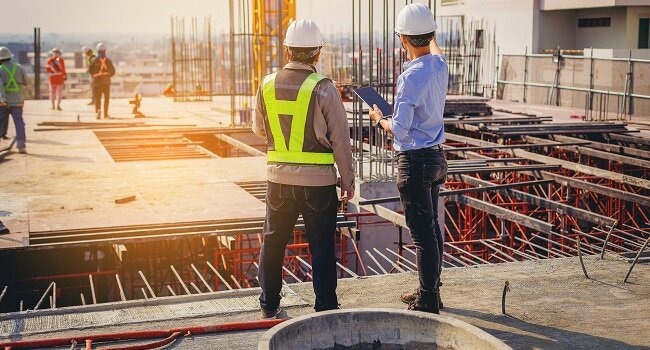Technological innovation isn’t a new phenomenon in the construction industry. Currently, the industry is witnessing a surge of novel technologies that hold the potential to revolutionize the way things are constructed. The industry is transforming by adopting advanced technologies and intelligent processes to enhance profitability, safety, sustainability, and efficiency.
Adopting emerging construction technology isn’t merely a passing trend or a mere source of amusement. Upgrading current processes has tangible and practical advantages. Construction firms are utilizing methods like 3D visualization from Spatial to incorporate new techniques into their strategies and procedures to stay competitive and avoid being left behind.
These innovative technologies significantly impact the construction industry’s operations and will dictate how future projects are executed. Here are the most noteworthy emerging trends in the construction industry.
1. 3D Printing
The construction industry is experiencing a transformation with the implementation of 3D printing technology, which offers a sustainable, efficient, and cost-effective alternative construction method. This technology utilizes a layer-by-layer approach to construct large-scale objects, making it ideal for intricate architectural designs and geometric shapes. 3D printing can produce concrete and other building materials, such as steel, expediting material acquisition and streamlining the process by removing intermediate steps.
3D printing technology can address some of the significant challenges in the construction industry. For instance, traditional construction sites produce a lot of waste, but 3D printers are designed to use only the materials needed for construction, resulting in almost no waste.
Additionally, 3D printers utilize lattice patterns, making it possible to use recycled plastic to create robust structures. Unlike traditional construction methods that often reuse templates and designs, 3D printing enables the creation of unique solutions tailored to specific projects, allowing for greater design flexibility and customization.
2. Virtual Reality
The use of virtual reality (VR) technology in conjunction with building information modeling (BIM) has the potential to enhance the understanding of complex construction projects. Designing a building with BIM makes it possible to visualize it in VR, allowing for a 360-degree virtual walk-through experience. This combination of technologies can provide a more immersive and realistic view of the project, enabling stakeholders to identify issues early on and make more informed decisions.
By having a comprehensive understanding of the project before it starts, it is possible to avoid costly changes and modifications during the construction process. Additionally, VR technology allows for an even more realistic representation of the project upon completion, benefiting both the team and the client. In recent years, VR has expanded its applications across the industry, providing numerous new opportunities for construction professionals.
3. Drones
Unmanned aerial vehicles, commonly known as drones, have become pivotal in the construction industry. Drones offer a multitude of applications, including site mapping, land surveying, structural inspection, and project supervision.
They outperform ground-based teams by conducting site assessments more effectively and precisely, presenting a more economical option for aerial imaging. Drones can be fitted with various sensors to collect data on environmental factors such as temperature, humidity, and air quality.
This accurate and timely information aids construction teams in making well-informed decisions. As a result, such technology enhances safety precautions and reduces project costs.
Drones are often utilized for photogrammetry to generate precise 3D models of sites and structures, offering valuable insights into real-world conditions. They deliver fast, repeatable, and on-demand image capture, streamlining documentation and expediting subcontractor reconciliation.
4. Internet Of Things (IoT)
The IoT is a technology that collects data from multiple interconnected devices using sensors and algorithms. Such data are invaluable to the construction industry, enabling professionals to identify safety hazards and ensure construction progresses as planned. With real-time data from sensors now available, construction companies can respond quickly and efficiently.
Wearable technology and IoT applications are increasingly employed in construction projects to bolster safety and productivity. Wearable devices can track workers’ vital signs and provide warnings if they approach hazardous zones, thereby preventing injuries. IoT software can also monitor equipment, tracking parameters like pressure, temperature, and humidity to identify potential risks that demand immediate attention.
5. Building Information Modelling
BIM is undoubtedly one of the most prominent technologies in the construction industry. It is a digital process involving the development of a 3D model of a building and its components, which is used for design, construction, and maintenance purposes. BIM fosters enhanced collaboration and coordination between architects, engineers, and contractors, minimizing errors and boosting efficiency. In recent years, it has emerged as a vital tool in the construction industry, promoting sustainable technology and productivity.
BIM streamlines information sharing, adding value to the data and enabling its reuse. As a result, teams can work more effectively and avoid errors or redundancies. It also facilitates the in-depth exploration of architectural concepts, running simulations, and benchmarking performance, leading to refined and innovative solutions. This technology has transformed the construction industry’s operations, resulting in increased accuracy, efficiency, and innovation.
Conclusion
The adoption of emerging technologies is significantly transforming the construction industry, enhancing efficiency, productivity, and safety throughout the construction process. By leveraging these technologies, construction companies can save time and money, reduce waste, and improve overall project results.

Although some of these technologies are still in their infancy, they offer immense potential for the future of construction. As the industry evolves, even more remarkable advancements can be expected in the coming years.




























